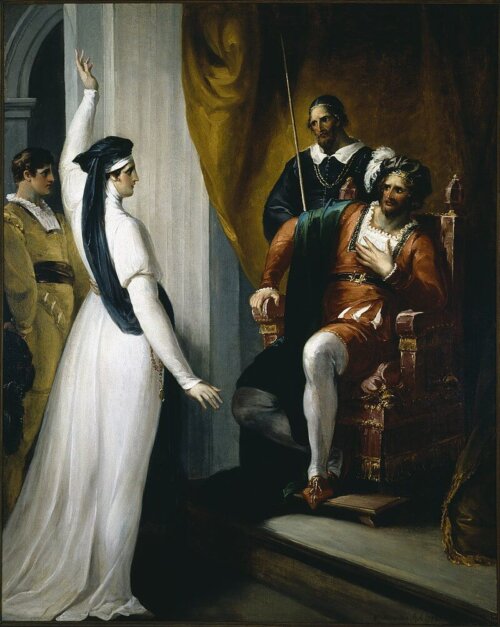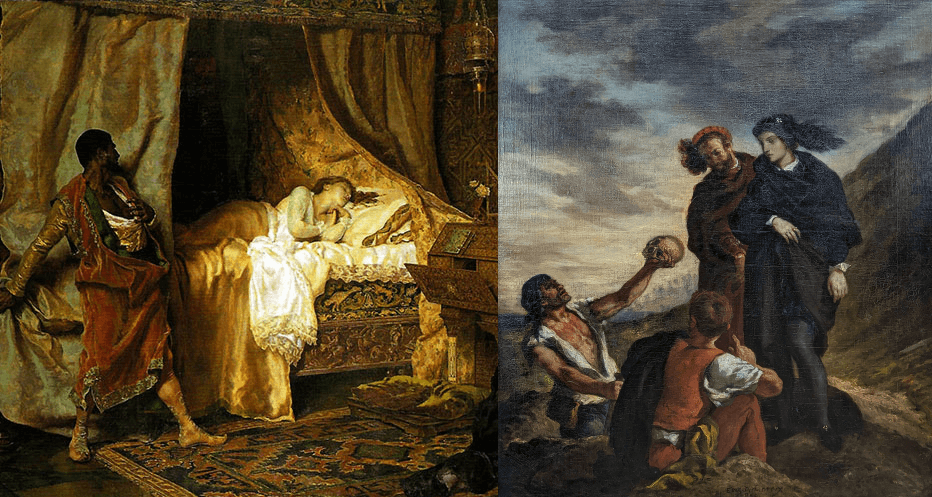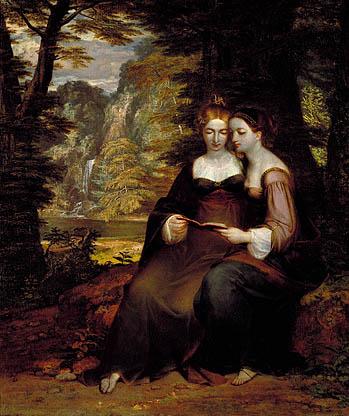Smiles from Reason Flow

So wrote Milton, describing the love between Adam and Eve, and its expression in their faces. The smile, for Milton, was proof that we are made in the image of God. Although animals can grin and grimace, they lack the essential feature that enables us to read a face as smiling, namely the consciousness of self. Only a reasoning being, Milton thought, could respond to another with a smile, and in doing so he or she is communicating not just eye to eye but I to I. The self revealed in the face is called forth by the other. It is in this tacit dialogue that the flesh is raised as it were from matter to spirit.
What is true of smiles is also true of blushes. Blushes from reason flow, to brute denied, and are of love the food. Even if by some trick, you are able to make the blood flow into the surface of your cheeks, this would not be blushing but a kind of deception. And it is the involuntary character of the blush that conveys its meaning. Mary’s blush upon meeting John, being involuntary, impresses him with the sense that he has summoned it — that it is in some sense his doing, just as her smile is his doing. Her blush is a fragment of her self-consciousness, called up onto the surface of her being and made visible in her face.
The presence of the subject in the face is yet more evident in the eyes. Animals can look at things: they also look at each other. But they do not look into things. Perhaps the most concentrated of all acts of non-verbal communication between people is that of lovers, when they look into each other’s eyes. They are not looking at the retina, or exploring the eye for its anatomical peculiarities as an optician might. Each is looking for, and hoping also to be looking at the other, as a free subjectivity who is striving to meet him I to I.
The joining of perspective that is begun when a glance is answered with a blush or a smile finds final realization in wholly reciprocated glances: the ‘me seeing you seeing me’ of rapt attention, where neither of us can be said to be either doing or suffering what is done. As Donne puts it, in “The Extasie”:
Our eye-beams twisted, and did thread / Our eyes, upon one double string.
Looks are voluntary. But the full revelation of the subject in the face is not, as a rule, voluntary. Milton’s observation, that “smiles from reason flow,” is fully compatible with the fact that smiles are usually involuntary, and “gift smiles” — the smiles in which one person makes a gift to the other — always so. In the past people were often reserved about smiling for this very reason — they kept their smiles for their intimates, and did not wish to spend them promiscuously on those who did not matter to them or who ought to perceive them in their withdrawn and public aspect. Hence, in those times, people did not smile into the camera when photographed, but maintained postures of dignified resistance to those strangers who might be peering at them through the lens.
The contrast with the modern selfie is very striking. Even politicians and priests now smile into the camera, in an undignified retreat to a posture of non-aggression. The fact that you cannot be friends with everyone and that niceness offered promiscuously is really a form of nastiness — an affectionless withdrawal from the true personal encounter — this fact is no longer widely understood.
The voluntary and deliberately amplified smile is not in fact a smile at all. It is a mask. One of the greatest smiles in all painting is that bestowed on Rembrandt by his aged mother and by Rembrandt on her. Here the mouth is barely inflected, and the eyes, dull with age, are nevertheless bright with maternal affection. Very few paintings present so vivid an instance, of the subject revealed in the face. We, the viewers, know what it is like for this woman, to look this way on her son. We know this because the smile is so evidently involuntary.
A sincere smile is involuntary, but a sincere kiss is willed. That is true, at least, of the kiss of affection. In the kiss of erotic passion, however, the will is also in part overcome and in this context the purely willed kiss has an air of insincerity. The sincere erotic kiss is both an expression of will and a mutual surrender.
Describing the temptation and fall of Francesca da Rimini, Dante writes of Francesca recalling the moment when she and Paolo read together the story of Lancelot and Guinevere, and reached the passage where Lancelot falls victim to Guinevere’s smile. She remembers reading how the fond smile was “kissed by such a lover.” She then recalls Paolo kissing, not her smile, for she was no longer smiling, but her mouth: la bocca mi baciò tutto tremante (Inferno V, 136). Francesca has been aware, through Guinevere, of her own smile; but when Paolo kisses her, her smile becomes a mouth, full of trembling. She experiences her desire as a force from outside, an overcoming, which she is powerless to resist, since it has been transferred to the I.
Reflecting on the ways in which we are revealed to each other in the face, we come to see what is at stake in the self-portrait. The face, as Levinas puts it, is “visitation and transcendence.” The face comes into our shared world from a place beyond it, while in some way remaining beyond it, always just out of reach. I lie behind my face, and yet I am present in it, speaking and looking through it at a world of others who are in turn both revealed and concealed like me. My face is therefore bound up with the pathos of my condition. In a sense you are always more clearly aware than I can be of what I am in the world; and when I confront my own face there may be a moment of fear, as I try to fit the person who I know so well to this thing that others know better.
How can the person, whom I know as a continuous unity from my earliest days until now, be identical with this decaying flesh that others have addressed through all its changes? That is the question that Rembrandt explored in his lifelong series of self-portraits. For Rembrandt the face is the place where self and flesh melt together, and where the individual is revealed not only in the life that shines on the surface but also in the death that is growing in the folds. The Rembrandt self-portrait is the rare thing that the selfie can never be — a portrait of the self.
This was originally published in The European Conservative on October 7, 2020.




